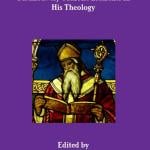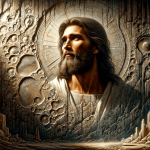
Photo by G. M. Hatfield, Wikimedia Commons (public domain)
***
Here, for your Sabbath reading pleasure, are five links to articles in a previous number of Interpreter: A Journal of Latter-day Saint Faith and Scholarship:
Stan Spencer, “What Did the Interpreters (Urim and Thummim) Look Like?”
ABSTRACT: The interpreters were a pair of seer stones used by Book of Mormon prophets and provided to Joseph Smith for translating the Nephite record. Martin Harris described them as two white, marble- like stones that could be looked into when placed in a hat. Joseph Smith described them as spectacles with which he could read the record and later as two transparent stones set in the rim of a bow. Others described them as smooth stones, diamonds, or glasses. Reconciling these various descriptions and determining the actual appearance of the interpreters requires an assessment of the credibility of each source and an understanding of how the interpreters were used in translating. It also requires an understanding of how words such as glasses, transparent, and diamonds were used in Joseph Smith’s day, particularly in reference to seer stones. An assessment of the various descriptions of the interpreters in light of these factors lends support to both Martin Harris’s and Joseph Smith’s accounts. By these accounts, the interpreters were smooth, mostly white, perhaps translucent stones set in a long metal frame. Although they superficially resembled eyeglasses, the stones were set much too far apart to be worn as such. They were not clear like eyeglasses but were transparent in the sense that they, like other seer stones, could be “looked into” by a person gifted as a seer of visions.
Review of George B. Handley, If Truth Were A Child: Essays, (Provo, Utah: Neal A. Maxwell Institute for Religious Scholarship, 2019), 253 pp. $19.99 (paperback).
Abstract: George B. Handley challenges his readers to reevaluate conventional definitions of truth and the approaches they employ to define their own truths. He argues that the individual quest for truth should include as many available resources as possible, whether those resources are secular or religious. His framework of intellectual and religious experience allows him to discuss truth in the context of literary theory and of the events that shaped his own faith. My review focuses on four themes: balancing experience and learning, balancing the individual and the community, balancing answers and faith, and balancing individual readings of holy texts. Ultimately, Handley’s discussion of those themes gives readers the tools to navigate the current public discourse more effectively, empowering them to look beyond their own perspectives to discover the good in everyone and find balance in their lives.
, , and Gentiles in the Book of Mormon”
Abstract: The word Gentiles appears 141 times in the Book of Mormon (the singular Gentile appears only five times.) It appears more frequently than key words such as baptize, resurrection, Zion, and truth. The word Gentiles does not appear with equal frequency throughout the Book of Mormon; in fact, it appears in only five of its fifteen books: 1 Nephi, 2 Nephi, 3 Nephi, Mormon, and Ether. Additionally, Book of Mormon speakers did not say Gentiles evenly. Some speakers said the word much less often than we might expect while others used it much more. Nephi1 used Gentiles the most (43 times), and Christ Himself used it 38 times. In addition to analyzing which speakers used the word, this study shows distinctive ways in which Book of Mormon speakers used this word.
Richley Crapo, “Lehi, Joseph, and the Kingdom of Israel”
Abstract: I present evidence of two priesthoods in the Jewish Bible: an Aaronite priesthood, held by Aaron and passed down through his descendants; and a higher Mushite priesthood, held not only by Moses and his descendants but also by other worthy individuals, such as Joshua, an Ephraimite. The Mushite priests were centered in Shiloh, where Joshua settled the Ark of the Covenant, while the Aaronites became dominant in the Jerusalem temple. Like Joshua, the prophet Lehi, a descendant of the northern tribe of Manasseh, held the higher priesthood. His ministry, as recounted in the Book of Mormon, demonstrates four characteristics that show a clear connection to his ancestors’ origins in the northern Kingdom of Israel: (1) revelation through prophetic dreams, (2) the ministry of angels, (3) imagery of the Tree of Life, and (4) a positive attitude toward the Nehushtan tradition. These traits are precisely those which scholarship, based on the Documentary Hypothesis, attributes to texts in the Hebrew Bible that originated in the northern Kingdom of Israel rather than in Judah.
Abstract: In this article, we offer a general critique of scholarship that has argued for Joseph Smith’s reliance on 1 Enoch or other ancient pseudepigrapha for the Enoch chapters in the Book of Moses. Our findings highlight the continued difficulties of scholars to sustain such arguments credibly. Following this general critique, we describe the current state of research relating to what Salvatore Cirillo took to be the strongest similarity between Joseph Smith’s chapters on Enoch and the Qumran Book of Giants — namely the resemblance between the name Mahawai in the Book of Giants and Mahujah/Mahijah in Joseph Smith’s Enoch account. We conclude this section with summaries of conversations of Gordon C. Thomasson and Hugh Nibley with Book of Giants scholar Matthew Black about these names. Next, we explain why even late and seemingly derivative sources may provide valuable new evidence for the antiquity of Moses 6–7 or may corroborate details from previously known Enoch sources. By way of example, we summarize preliminary research that compares passages in Moses 6–7 to newly available ancient Enoch texts from lesser known sources. We conclude with a discussion of the significance of findings that situate Joseph Smith’s Enoch account in an ancient milieu. Additional work is underway to provide a systematic and detailed analysis of ancient literary affinities in Moses 6–7, including an effort sponsored by Book of Mormon Central in collaboration with The Interpreter Foundation.
Posted from Cedar City, Utah










